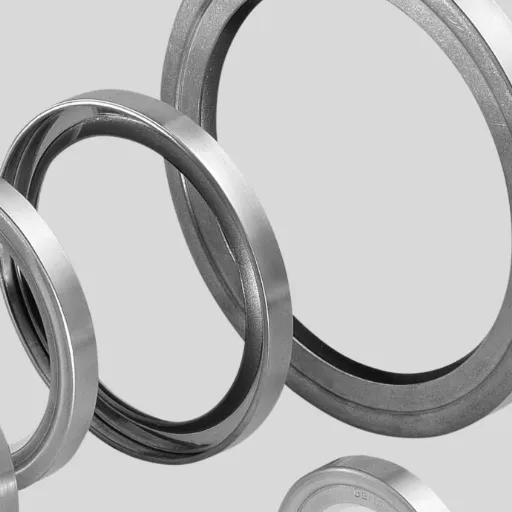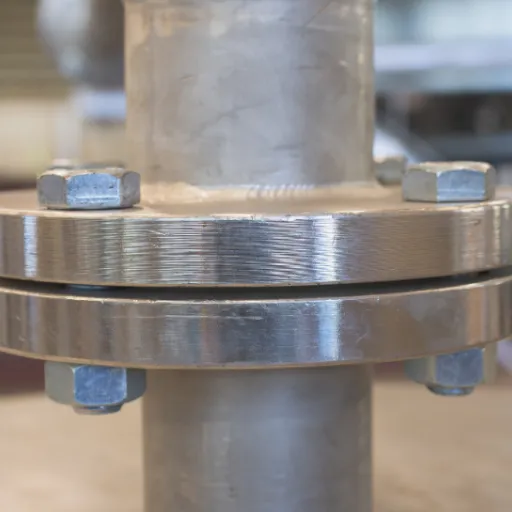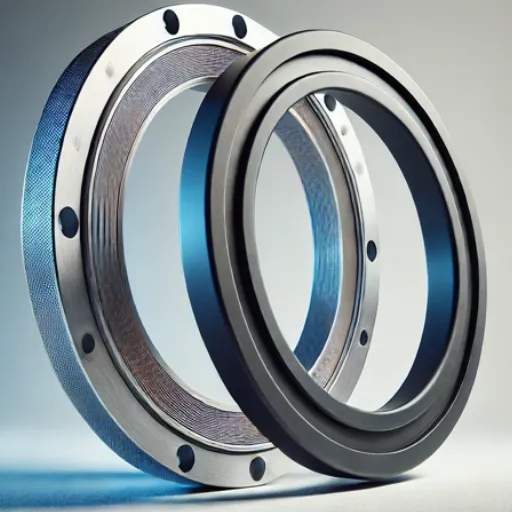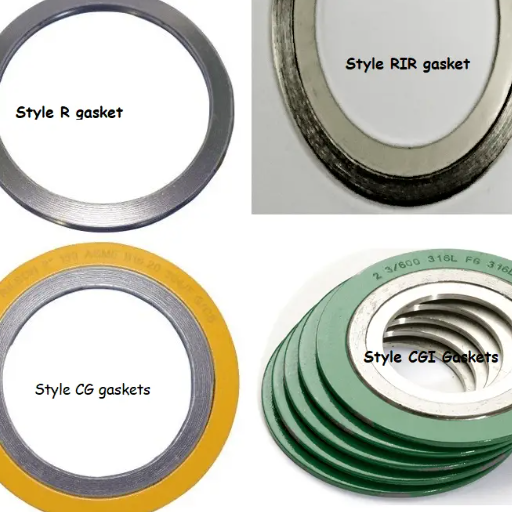Flanges perform the crucial function of linking pipes, valves, and other equipment in piping systems. Weld neck and slip-on are among the most commonly used flanges, each with its particular features and applications. To select the correct one for any given project, one must grasp the differences between these flange types. This guide details the main differences between slip on flanges vs weld neck, talking about their design aspects, installation, strengths, and other practical considerations. By the time you finish reading this, you will clearly understand the pros and cons of each flange and be able to make an informed decision on which one is right for your welding and piping needs.
Understanding Flanges

Weld neck flanges feature a long, tapered hub that gives excellent reinforcement, available in configurations for high-pressure, high-temperature applications. The flange is welded directly to the pipe, the weld making a strong joint that is able to withstand the highest stress while ensuring minimal withering. Slip-on flanges, on the other hand, are a simpler type of flange: their installation procedure involves sliding the flange over the pipe and welding it at both the inside and outside of the flange. These are less expensive than weld neck types and generally considered for low-pressure applications, but they lack the strength and leak-tightness that a weld neck flange can provide. Choosing between weld-neck and slip-on flanges is completely dependent on the operating pressure-temperature budget of the system.
What is a Flange?
A flange is a crucial component used in piping systems to connect pipes, valves, or equipment, allowing for easy assembly, disassembly, and maintenance. It serves as a strong and reliable joining method, providing structural support while ensuring leak-proof connections. Flanges come in basically any type there are: weld neck, slip-on, blind, and so on and so forth, all accommodating pressure and temperature requirements. Therefore, with its extreme versatility and durability, the flange has innumerable applications from oil and gas to chemical processing and power generation.
Types of Flanges
Flanges are categorized on their designs and functions and are used in operational conditions defined by the industry. Some of the most common types are as follows:
Weld Neck Flanges
These types of flanges possess a long tapered neck that provides reinforced structural integrity, being ideally used for high-pressure and high-temperature environments. They are used in industries operating under critical conditions, such as oil and gas pipelines.
Slip-On Flanges
These are easy to fit and weld, relatively cheap, and considered appropriate for low-pressure devices or those that need standard maintenance.
Blind Flanges
Used to close the downstream pipe or to isolate a pipeline when pressure testing or isolating a system is involved, they provide a secure seal since they have no bore.
Socket Weld Flanges
These are the flanges for small-diameter and high-pressure pipelines. The pipe is inserted into the socket end and welded for added support providing smooth bore flow.
Threaded Flanges
These are flanges used where welding cannot be done. They are screwed on the pipe, which makes it easy to install, especially in low-pressure and low-temperature systems.
Picking the right flange type for every specific function helps industries ensure the best performance, safety, and efficiency in their operations.
Importance of Flanges in Welding
The flanges have an essential role in welding as they ensure the pipes, valves, and other equipment are reliably joined. They maintain structural integrity and facilitate assembly and disassembly to act on the system, i.e., maintenance or inspections requiring extraordinary system downtime. If indeed the proper flange type is selected, it has direct implications for the safety, efficiency, and performance of the entire system. They save the system from loss of fluid flow paths, from leaks, and from operational pressures and temperature. Thus, the flange contributes to durable and good welded systems required by many industrial applications.
Weld Neck Flange

The weld neck flange is especially made to give great strength and durability to its high-pressure and temperature applications. The characteristic feature is the long tapered hub that gradually merges with the pipe to lower stress concentration and permit smooth fluid flow. Weld neck flanges are usually used in oil and gas, petrochemical, and power industries and fit very well in situations where frequent pressure changes or extreme conditions occur. Weld neck flanges are welded directly to the pipe, creating a very potent wedge weld seal, and hence, are the viable choice for critical systems where performance and reliability matter.
Definition and Characteristics
Weld neck flanges possess a long, tapered hub that connects to the pipe while providing smooth integration. This design, in essence, reduces the level of stress and turbulence and makes it best for systems that involve high pressure and temperatures. Weld neck flanges have witnessed an ever-rising demand as they are being used in the major industries that require durable and precise flange types. Of critical operations in pipelines, refinery systems, and nuclear plants, these weld neck flanges, featuring the ability to create a leak-proof sealing and having the best mechanical strength, are some of the most sought-after types used these days. These immediately testify to the reliability and versatility these flanges offer, cementing their place in history as one of the most utilized flange types today.
Advantages of Weld Neck Flanges
Given the number of benefits weld neck flanges enjoy, they find their way into most of the industrial applications that would demand them. The long tapered hub reduces the stress concentration at the base, thus helping welding neck flanges retain high structural integrity and being able to withstand high pressure and temperature. Another advantage that weld neck flanges offer structurally is the smooth transition to the pipe wall; this reduces turbulence as well as erosion within the pipeline system-that would negatively affect the fluid flow. Wear and corrosion provide an excellent setting for welding neck flanges in collaboration with all kinds of materials, including stainless steel and carbon steel. This clearly shows that weld neck flanges are widely used in industries such as oil and gas, chemical processing, and power generation. From recent search data, it is seen that more companies appreciate weld neck flanges for their ability to resist extreme conditions and promote safety and longevity in critical operations. They seal the best tight and are considered a great, efficient solution to seal piping systems and process connections.
Applications of Weld Neck Flanges
Due to their ability to perform under heavy working conditions, these flanges are good fit for many industrial applications. They are widely used in oil refineries, gas plants, and chemical plants, where dealing with high-pressure conditions is common. Their tapered neck can decrease the stress concentrations; this is literally vital for structural integrity under extreme temperature and pressure conditions. In addition, recent search trends report an upsurge in demand for these flanges in power generation systems, especially nuclear and thermal plants, where failure is never an option.
The data from recent research also casts light on the growing use of these flanges for subsea pipelines and offshore applications. Due to the durability and the secure weld connection of these flanges, they fit perfectly well in an undersea environment where harsh conditions are cushioned by corrosive saltwater and demand materials of very high resistance. Furthermore, such leakage prevention ability of weld neck flanges solidifies safety and complements the recent push by the industries toward even higher safety and environmental standards.
Welding technology and related processes have recently opened the door to the manufacture of weld neck flanges with specialized alloys that would resist very specific problems, for instance, chemical erosion or sudden changes in thermal expansion. Versatility coupled with the reliability of weld neck flanges continues to make them the first choice for important infrastructural projects across a host of industries.
Slip-On Flange

Loosely translated, a slip-on flange-slide is a flange designed to be slipped over a pipe end such that the flange face extends beyond the end of the pipe. The flange is then welded on the inside and outside to procure strength and leak-proofness in the joint. Slip-on flanges are selected where the emphasis is on excellent installation, the cost factor, or where pipe alignment is not imperative. Those are ideal where environmental conditions pose low pressure requirements and are essentially available for general water treatment, HVAC, and plumbing applications.
Definition and Characteristics
They are defined by their design approach that allows the pipe to be inserted into the bore of the flange before welding. This usability makes this flange type very versatile across various applications. According to the latest data, search queries show users are mainly interested in pressure ratings and material compatibility. Slip-on flanges are generally for lower pressure ratings up to 300 psi and offered in an array of materials, including stainless steel, carbon steel, and alloys, depending on environmental and operational needs. They are mostly preferred for projects with priority for being cost- and flex-friendly without compromising on durability or safety measures.
Advantages of Slip-On Flanges
Cost-Effectiveness
Slip-on flanges are really the most reasonably priced option for connecting pipelines, valves, and other equipment. The less complicated construction and reduced metal thickness when compared to other flange types result in lower manufacturing costs without sacrificing their practicality.
Ease of Installation
Slip-on flanges install easily due to the placement over the pipe, requiring less precision in pipe cutting and thus more rapid installation. Some industry experts even claim that simplified installation reduces labor costs by 20%.
Material Versatility
Typically available in stainless steel, carbon steel, and special alloys, these flanges fit practically into any kind of operating environment, encompassing such harsh ones as highly corrosive and high-temperature situations.
Pressure and Temperature
While largely considered for lower-pressure systems (up to only about 300 psi), improvements in manufacturing and material technologies mean that the slip-on flange finds applications where pressure and temperature requirements are substantially higher than this rating. An example could be custom slip-on flanges for industrial use, capable of handling up to 600 psi.
Greater Flexibility
Slip-on flanges are especially required for applications where modifications are likely. The possibility of slipping over pipes provides immense installation-level flexibility and improved alignment and reduces the chances of misfit.
Could perform better in moderate applications
With good weld application (both inside and outside the flange as per standard procedure), they tend to be free of leakage and withstand all pressures moderately, great enough to be involved in moderate-pressure applications in water treatment, oil & gas, and chemical processing industries.
Hence, combining cost-effectiveness, adaptability, and efficiency makes the slip-on flange an almost indispensable factor in many industrial projects.
Applications of Slip-On Flanges
Slip-on flanges find their applications extensively in diverse industrial sectors for various purposes because of their ability to adapt and remain cost-efficient. These flanges are often used for systems operating under moderate pressure and temperatures, such as water-based pipeline distribution systems, wastewater treatment plants, and HVAC systems. The oil and gas industry frequently applies slip-on flanges in refineries and offshore operations to minimize downtime through an easy installation and maintenance process. Furthermore, it is used extensively in the chemical processing industry in connecting piping systems that convey non-corrosive or mildly corrosive substances and in fire protection systems to assure dependable and safe joint connections. This availability for various applications is a confirmatory statement on their contribution to making sure cost-effectiveness and operational productivity go hand in hand.
Slip on Flanges vs Weld Neck
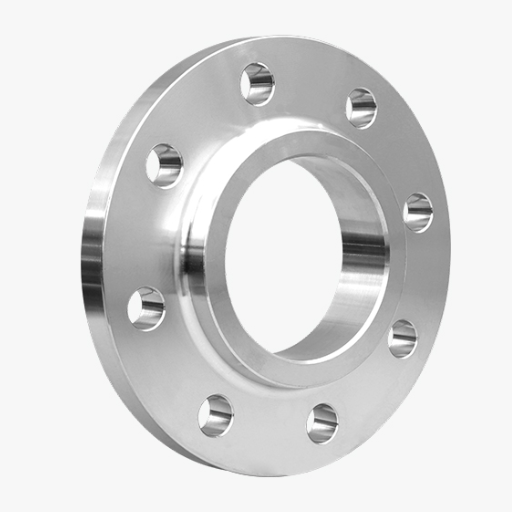
| Parameter | Weld Neck | Slip-On |
|---|---|---|
| Strength | High | Moderate |
| Pressure | High | Low-Medium |
| Cost | Higher | Lower |
| Installation | Complex | Simple |
| Durability | Long-term | Shorter-term |
| Leak Risk | Low | Moderate |
| Applications | Critical | General |
Slip on Flanges vs Weld Neck: Strength and Performance
It is vital to consider the application’s specifications when comparing weld neck flanges to slip-on flanges for their strength and performance characteristics. Weld neck flanges are meant to provide durability and strength with the characteristic bevel at the neck that offers a smooth transition to the pipe. This design reduces stress concentration, making them very suitable for extreme pressures and temperature conditions. Recent studies have demonstrated that weld neck flanges have been used to withstand pressures in excess of 5,000 psi during cruel operations performed in oil and gas pipelines and chemical processing plants in extremely demanding environments.
Meanwhile, slip-on flanges are preferred in lower-pressure systems where the ease of installation saves time and labor. Slip-on flanges, having not as much strength as weld neck flanges, work well in less demanding environments in providing a secure connection without complicated welding processes. Industry feedback makes an emphasis that slip-on flanges are often used in circumstances in which pressures are below 2,000 psi, temperature variations are minimal, and such include water pipes or low-grade steam systems.
With growing advances in the materials of the flange and manufacturing methods, the capabilities of both these types have been further converging. Today, new-age alloys and non-corrosive finishes are being introduced to increase the durability and life of the flanges to conform to a broader gamut of specifications. Ultimately, the selection between weld neck and slip-on flange should be made on the basis of an in-depth study of the exact operational conditions, the budget available, and the goals for performance in the long run.
Cost Comparisons and Considerations
Besides cost comparisons between weld neck and slip-on flange, one must consider the possibility of operation costs in the future. Usually, a slip-on flange would be the cheapest option to buy and install. This is because they have a simple design coupled with a setting that requires very little welding around the pipe, so labor costs are minimized. Contrarily, a weld neck is more expensive; the design is more complex, and installation requires more precision.
On the other hand, from a long-term perspective, weld neck flanges should be considered because they provide better strength, less chance of leakage, and good durability against extreme pressure and temperature scenarios. This also means that the repairs, replacements, and downtimes will be less, thus ultimately, in the long run, offsetting initial cost.
The latest data indicate that industrial setups having severe operating conditions are inclined to opt for weld neck flanges to avoid incidences of failure, whereas slip-on flanges are still winning on cost for less critical areas and applications. To strike a balance among these parameters, a careful, in-depth understanding of the performance requirements as well as constraints for the area is necessary so that the correct flange will contribute properly toward both target budgets and operational requirements.
Choosing the Right Flange for Your Needs

Initially, evaluate the conditions under which your project will operate to determine the correct flange for your purposes. In cases of high pressure or temperatures, weld neck flanges are suitable, as they offer less resistance to being distorted against such severe application of stress forces. If more consideration is given to price and less is placed on pressure or temperature requirements, slip-on flanges would be cheaper. The flange material and type should always be compatible with the pipes to be connected and the medium being transported. Additional factors and considerations made from the industry standards and project specifics must be taken into account to arrive at this decision.
Factors to Consider
When considering the type of flange, I look at operating conditions such as pressure and temperature, as well as the transport medium. I also consider the compatibility of the flange material with that of the connected pipes in order to maintain some reliability and safety. Price is considered quite heavily while making sure the flange meets all the industry standards and specific project requirements.
High-Quality Flanges: What to Look For
Some considerations should be taken into account when selecting high-quality flanges that should provide durability, efficiency, and compatibility with your system. The first is the material composition; higher-quality materials such as stainless steel or alloy steel offer excellent corrosion resistance, while they will also stand against temperature variation and pressure extremes. It is further advisable to look into the standards followed during the manufacturing- flanges made in conformity to well-recognized industry standards such as ASME, ANSI, or ISO guarantee consistent quality and compatibility.
Respect the kind of flange that best suits your application being investigated; that is, slip-on flanges are best applied in low-pressure situations, while weld neck flanges find their place in high-pressure environments. Flange dimensional finishes, on the other hand, ought to be more accurate, as even slight deviations may cause leakages and reduce efficiency in operation. Flanges that provide for coating and treatment will offer an improvement in the ability of the flange to withstand severe exposure.
Lastly, manufacturers should embrace the strongest quality control for their own assurance. Find repute producers that will conduct a lot of non-destructive testing (NDT) on their flange as well as make use of new experience in digital inspection technologies as a way of proving the integrity and specifications of the article in question. You may also check customer reviews and certifications of well-established organizations to have extra accommodations to support your choice. By blending these factors concerning the most up-to-date fabricated data about market trends and innovation, your selection will result in the best-performing flanges compatible with modern engineering demands.
Conclusion: Making the Right Choice
All existing resources and data need to be integrated when it comes to making the decision to choose the right flanges. One may gather trends of the market, user reviews, and latest technological advances to bring about cutting-edge improvements. With this thorough approach, the choice will not be limited to pure technicalities in terms of performance and safety, but economic considerations will come into play through the evolving engineering standards. The right choice of flange, therefore, is one that balances quality and reliability with price and will also meet the future expectations of your projects.
Reference Sources
-
Academia.edu – Orifice flanges can be either weld neck, slip-on, or: Discusses the manufacturing and specifications of weld neck and slip-on orifice flanges.
-
Austin Peay State University – Division 23 00 00—Mechanical: Provides details on forged steel slip-on and weld neck flanges for carbon steel applications.
-
University of Houston – Steam and Steam Condensate Piping: Covers ANSI standards for weld neck flanges and their applications in steam piping.
Frequently Asked Questions (FAQs)
What are the key differences between slip on flanges and weld neck flanges?
Slip on flanges and weld neck flanges differ significantly in their design and application. A slip on flange is designed to slide over the pipe and is usually welded around the top, while a weld neck flange has a long neck that is welded to the pipe, providing a stronger connection. The neck of the weld neck flange helps to distribute stress and is particularly effective in high-pressure applications. In contrast, slip on flanges are typically easier to install and are often used in applications where the pipe will not experience high pressure. Understanding these key differences can help you choose the right flange for your needs.
How do I choose the right flange for my needs?
Choosing the right flange depends on several factors including pressure requirements, material compatibility, and installation conditions. For high-pressure and high-temperature applications, weld neck flanges are often preferred due to their robust design and ability to handle internal stresses. On the other hand, if ease of installation and cost-effectiveness are your primary concerns, slip on flanges may be the better option. It’s essential to consider the specific requirements of your project, including welding requirements and the type of joint needed, whether it be a butt weld or a fillet weld. Consulting with experts or using resources that detail flanges to help you decide can be beneficial.
What are the advantages of weld neck flanges versus slip on flanges?
Weld neck flanges offer several advantages over slip on flanges, particularly in terms of strength and performance under pressure. The design of a weld neck flange allows for a full penetration weld, which enhances the integrity of the joint and prevents turbulence at the joint. This makes weld neck flanges suitable for high-pressure applications, where slip on flanges may not provide sufficient strength. Additionally, weld neck flanges are less likely to warp under pressure, making them a reliable choice for critical applications. However, for less demanding applications, slip on flanges may still be a viable and cost-effective option.
Are slip on flanges suitable for high-pressure applications?
While slip on flanges can be used in various applications, they are generally not recommended for high-pressure situations. Their design does not provide the same level of strength and support as weld neck flanges, which are specifically designed to handle significant internal pressure. Slip on flanges tend to be more appropriate for low to moderate pressure applications where ease of installation is a priority. When considering flanges for high-pressure applications, it’s essential to assess the potential stresses and choose accordingly, often opting for weld neck designs that offer greater reliability.
Can slip on flanges be welded?
Yes, slip on flanges can be welded, and they typically require a weld around the top of the flange once it has been slipped over the pipe. This connection is often a fillet weld, which, while easier to execute, may not provide the same level of strength as a full penetration weld found in weld neck flanges. When using slip on flanges, it’s crucial to ensure that the weld is done properly to prevent leaks and ensure the integrity of the joint. If your application demands higher performance, you might want to consider using weld neck flanges as a more robust alternative.

